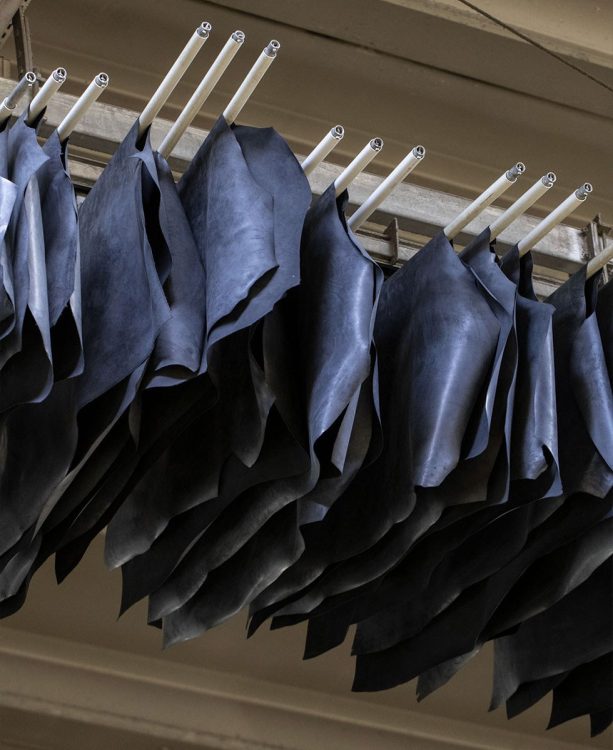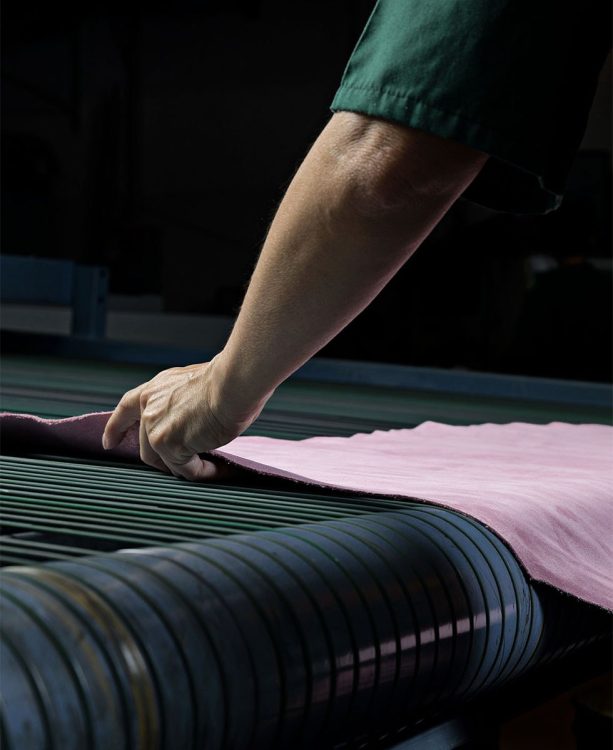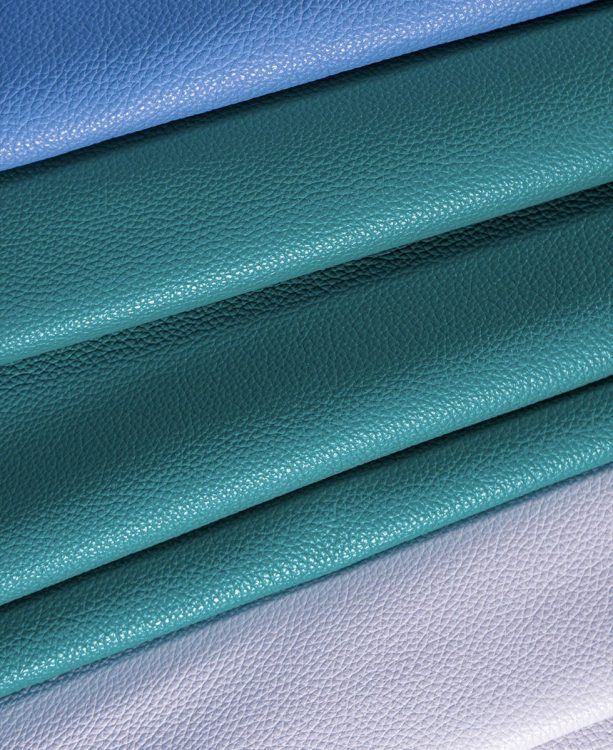Characteristics and types
Discovering the qualities of an extraordinary material
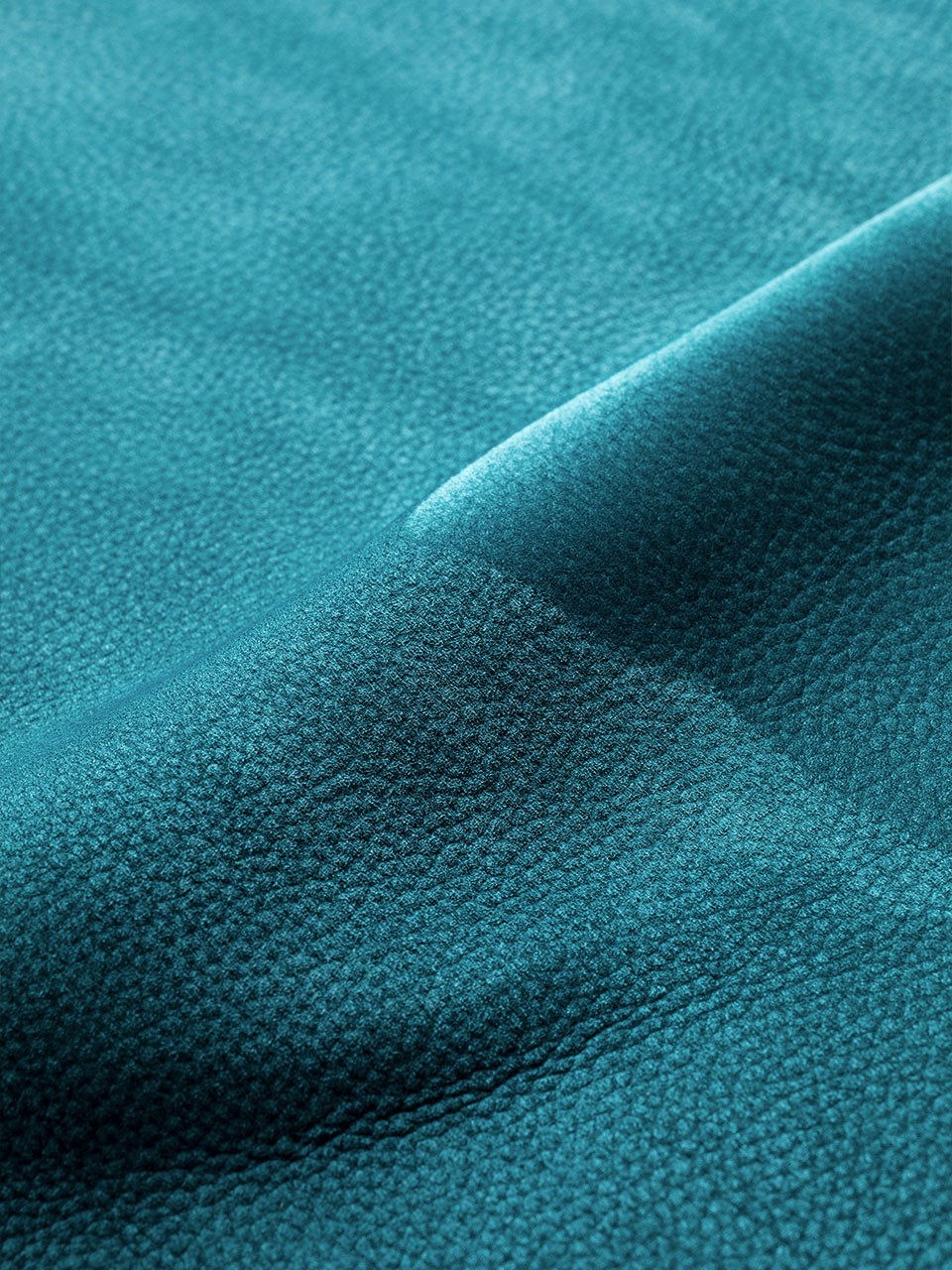

The tactile experience
An inimitable feeling
Touching a real leather product conveys a unique sensation of softness and warmth that no other material can replicate.
Elegant and supple, leather lends value and sophistication to every creation, preserving and even enhancing its value and authenticity over time.
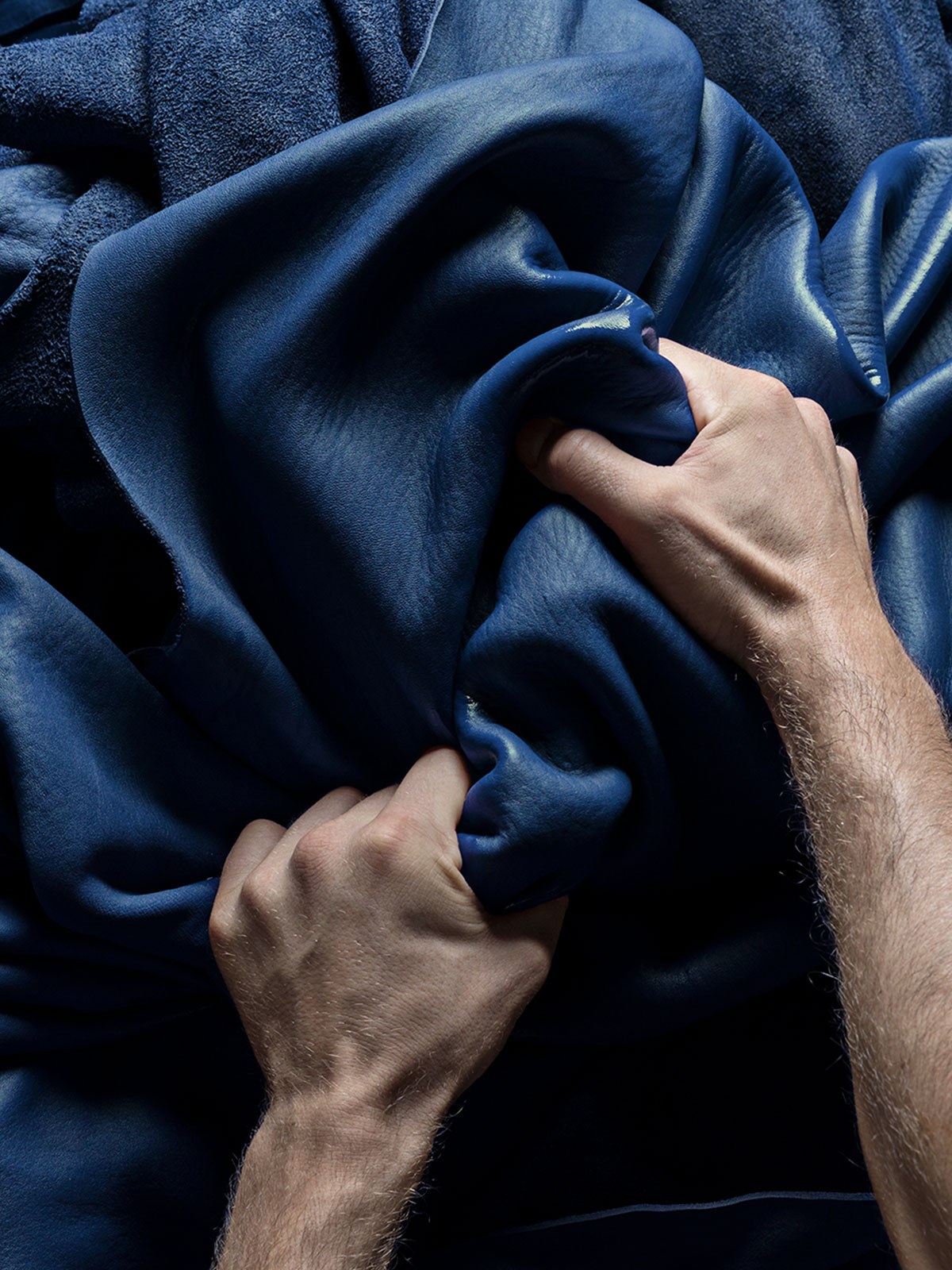
Leather combines durability, versatility and comfort: whether for a garment or a furniture product, its adaptability is unique. The timeless elegance of this material also makes it perfect for creating designs destined to transcend passing trends.
Being a natural material, leather is distinguished by its uniqueness and capacity to age gracefully, gaining character and charm over time.
Thanks to its extraordinary strength, leather retains its structural integrity and beauty even after years of use, effectively withstanding daily wear and tear.
Leather adapts perfectly to a wide range of applications, from garments to luxury furnishings, and always succeeds in enhancing the aesthetics of the item thanks to its rich variety of finishes and colours.
The intrinsic elegance of leather makes it a favourite choice for luxury and high-fashion items, to which it conveys a touch of class and sophistication which transcends momentary trends.
To each leather, its own treatment
Treatment types
There are three main types of treatment to maximise the beauty and value of leather, each of which contributes to its aesthetic and tactile appearance.
Origin of hides
Bovine hides
We use hides of bovine origin in our production processes, which differ depending on the sex and age of the animal. There are approximately 1.5 billion cattle and more than 500 different breeds in the world. At Gruppo Mastrotto, we use hides originating mainly in Europe (79%), as well as hides from North and South America (16%) and Africa (5%).
- The parts of the hide
Bovine hide can be distinguished by whether it belongs to the front, hind or side of the animal.
Hides from the front of the animal are thicker and stronger, while those from the hind and sides are thinner and smoother.A - Croupon
B - Neck
C - Head
D - Side
![Possibili difetti della pelle - Gruppo Mastrotto]()
- Possible flaws
Bovine hides may present various flaws. Imperfections that may affect the aesthetic quality of the finished product but which also tell the story of the animal from which they originate. Examples include insect bites, stretch marks following calving, fire branding (mainly in the US or skin lesions such as scratches and small lacerations suffered by cattle while out to pasture. In addition, variations in skin fibre density can lead to irregularities in colour and texture.
1 - Scratches
2 - Veins
3 - Insects
4 - Wrinkles
![Parti della pelle - Gruppo Mastrotto]()
The process
From hide to leather
The tanning process is an art that transforms raw hides into leather, ready for use in the sectors of destination. At Gruppo Mastrotto, all the chemical and physical treatments that make up our production process are aimed at ensuring that the leathers achieve maximum beauty and durability.



